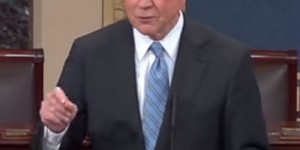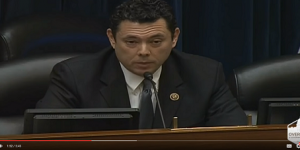CIS — The Department of Homeland Security (DHS) secretary issued a series of memoranda outlining the various facets of the programs and policies which would constitute, in total, “executive action” relating to immigration matters, following direction and approval from the president, who announced them in a nationwide speech the evening of November 20.
The memoranda cover ten key areas in which executive action is being taken. Some of the subject areas that are outlined consist of more than one memorandum. In a prior blog, I examined the secretary’s memorandum relating to the first piece of executive action: “Strengthen Border Security.” This blog focuses on the second piece, “Revise Removal Priorities”.
The executive actions being directed under the rubric of “revised” removal priorities are laid out in a memorandum from the secretary with a subject line of: “Policies for the Apprehension, Detention and Removal of Undocumented Immigrants”. That’s a fairly tough-sounding tag line for a memo, which doesn’t seem consonant with the notion of giving large swaths of the illegal alien population of the United States a pass on being deported, which I wondered about.
But it’s the little things that sometimes give away intent, and in this case, the actual name given to the PDF file that the government created for this memo is more revealing: it’s 14_1120_memo_prosecutorial_discretion”.
The misdirection contained in the memo’s subject line also provides an additional little bit of ironic counterpoint to a statement the secretary makes in the second paragraph: “To promote public confidence in our enforcement activities, I am also directing herein greater transparency in the annual reporting of our removal statistics…”
Much has been made of the “cooked books” used by this administration to support its repetitive claims of record levels of immigration enforcement, so it’s nice to see even this subtle admission—although the president didn’t hesitate, in his speech to make use of those same flawed statistics to make his case for “going it alone” through executive action in defiance of the legislative prerogative of Congress.
Revise Removal Priorities
It would be difficult to argue, on a superficial level, with the removal priorities laid out Part A of the memo, which lays out the Department’s “Civil Immigration Enforcement Priorities”.
•Priority 1 is “threats to national security, border security, and public safety” such as terrorists, gang members and aggravated felons;
•Priority 2 is “misdemeanants and new immigration violators”; and
•Priority 3 is “other immigration violators”.
The problem is that in many ways, “Revise Removal Priorities” is an inapt title for what the government is doing here—it’s not so much redefining priorities toward whom to arrest and charge; rather, it’s about redefining who is out of bounds for immigration agents, and therefore outside enforcement of the immigration laws under this administration.
For instance, to fit into that portion of priority two relating to misdemeanants, aliens pretty much must have committed three unrelated misdemeanors. By this time, they appear to be recidivists, and one wonders how many felonies they will also have committed, but not gotten caught at.
Similarly, enforcement officers are told to steer away from run-of-the-mill illegal aliens, unless they are “new immigration violators” meaning someone who entered on or after January 14 of this year. That’s pretty much most everyone among the 12 or 13 million illegal aliens in the United States.
Even aliens who have had their day in court—literally—and opted instead to flee after having been ordered deported (of whom there are, give-or-take, some 900,000 roaming the streets of America, a figure that has just about doubled under this president) are to be forgiven their contempt for the established due process system, because if the removal order occurred prior to January 14th, they fall into Priority 3, which the secretary describes as “the third and lowest priority for apprehension and removal”. Even then, they may be allowed to walk away if they are deemed “not a threat to the integrity of the immigration system”. One is constrained to ask: in any rational environment, how could a scofflaw and fugitive not be a threat to the integrity of a well-functioning immigration system?
Another completely confounding point is that the revised priorities have absolutely nothing to say about the employer sanctions laws. One could take the narrow view and suggest that since this is about “removals” it doesn’t merit mentioning. But of course, in the context of discussions about the integrity or brokenness of our immigration system, such a narrow view holds no place. The president tells us that the vast majority of aliens he wants to effectively pardon just want to work. The DHS secretary, in his border security memo refers to jobs and the economy in this country as “a pull factor” so clearly they understand the importance of cutting off that jobs magnet. Yet they have lost this opportunity to speak to it. The silence is deafening. How many more amnesties (legal or otherwise) will we have to experience serially before anyone gets serious about removing one of the main drivers of illegal immigration to the United States?
Let me mention one last little bit of obfuscation that I noted in the memorandum, despite the secretary’s earnest desire for “more transparency”. Part B, entitled “Apprehension, Detention, and Removal of Other Aliens Unlawfully in the United States”, begins with this marvel of disingenuousness: “Nothing in this memorandum should be construed to prohibit or discourage the apprehension, detention, or removal of aliens unlawfully in the United States who are not identified as priorities herein.” Does anyone really believe that? Certainly the agents and officers of the components in DHS responsible for immigration functions will recognize that for what it is: a bit of Orwellian newspeak crafted by the lawyers to protect the administration from those of us who will point out that prosecutorial discretion does not exist where there is no discretion at all being given to those whose job is to enforce the law.




























